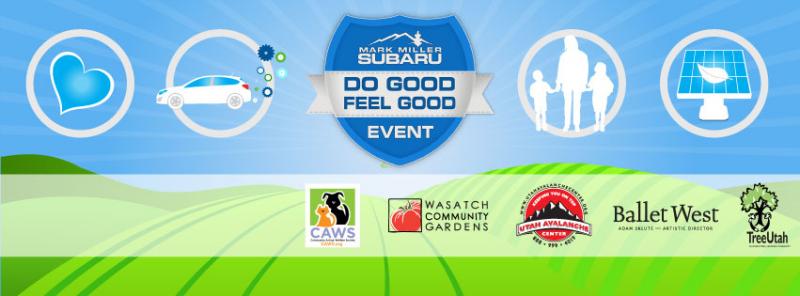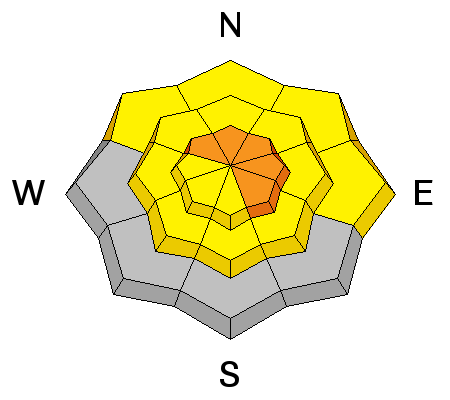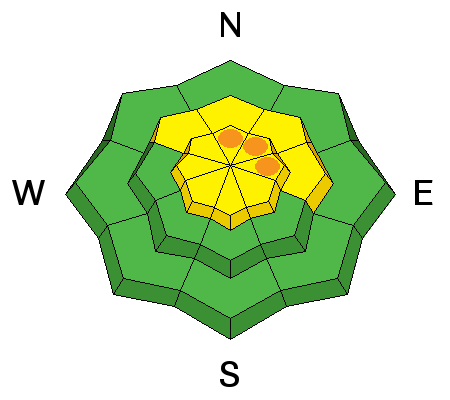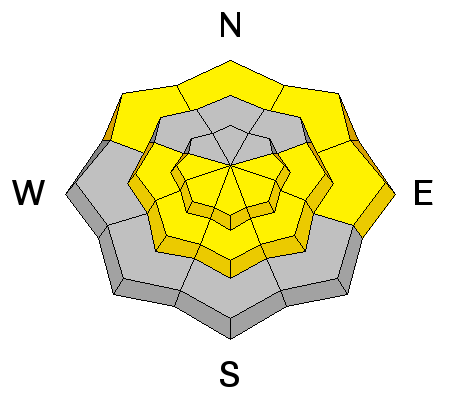| During the month of April, Mark Miller will donate $75 to the charity of your choice (5 to chose from, including the Utah Avalanche Center!) Mark Miller Subaru has raised over $300k in the previous 6 Do Good Feel Good events. More Info here |  |

For every car Mark MIller Subaru sells in April, they will donate $75 to the charity of your choice (5 to choose from). Who are you going to choose? Plus - you can vote for your favorite and the 3 groups receiving the most votes get an additional cash prize donated by Mark Miller Subaru. Details here

| During the month of April, Mark Miller will donate $75 to the charity of your choice (5 to chose from, including the Utah Avalanche Center!) Mark Miller Subaru has raised over $300k in the previous 6 Do Good Feel Good events. More Info here |  |
| Advisory: Logan Area Mountains | Issued by Toby Weed for Wednesday - April 2, 2014 - 6:35am |
|---|
 |
special announcement Sale on all remaining discount lift tickets donated to the Utah Avalanche Center from Beaver Mountain, Wolf Mountain, Sundance, and Brian Head: The few remaining tickets are being blown out with all proceeds used to pay for avalanche advisories and education. Go here to get your tickets.
|
 |
current conditions The Tony Grove Snotel at 8400' reports 6 inches of settled new snow in the last 24 hours, containing .7 inches of water. There's 118 inches of total snow, with 135% of average water content for the date. It's only 12 degrees at the 9700' CSI Logan Peak weather station, and I'm currently reading 10 mph west-southwest winds. You'll find nice powder riding across the zone, but also dangerous avalanche conditions on some steep slopes with significant deposits of new and drifted snow.
|
 |
recent activity No avalanches were reported locally sine last weekend's natural and easily managed intentionally triggered activity. Visit our Backcountry Observations Page for details on the season's activity.
|
| type | aspect/elevation | characteristics |
|---|


|


|

LIKELIHOOD
 LIKELY
UNLIKELY
SIZE
 LARGE
SMALL
TREND
 INCREASING DANGER
SAME
DECREASING DANGER
|
description
|
| type | aspect/elevation | characteristics |
|---|


|


|

LIKELIHOOD
 LIKELY
UNLIKELY
SIZE
 LARGE
SMALL
TREND
 INCREASING DANGER
SAME
DECREASING DANGER
|
|
description
Avalanches could step down to or just below dusty warm snow that was on the surface for during the Mid-March warm spell. In many cases, this interface between last week's snow and the older March melt-freeze snow appears weak, with the dusty layer at or perhaps just above a potential bed surface. In some cases, a thin layer consisting of small-grained sugary facets likely developed due to the strong temperature gradient right at this interface. Avalanches including Thursday's and the weekend's snow could be 1 to 2 feet deep, and they could be fairly wide, failing as well connected slabs on some slopes.
|
| type | aspect/elevation | characteristics |
|---|


|


|

LIKELIHOOD
 LIKELY
UNLIKELY
SIZE
 LARGE
SMALL
TREND
 INCREASING DANGER
SAME
DECREASING DANGER
|
|
description
It's not supposed to get too warm today, but you have to suspect seasonal warming this time of year anytime there is significant fresh snow. It won't take much warming to dampen the new snow, and as it is initially warmed, loose wet avalanches will become likely in steep terrain. Natural avalanches are also possible with seasonal warming, as the fresh snow becomes damp and more cohesive. If the sun peaks out from behind cloud-cover, the snow could go from nice powder to a cohesive and volatile moist layer almost instantly.
|
 |
weather
Check out our one-stop weather page........HERE |
| general announcements Utah Avalanche Center mobile app - Get your advisory on your iPhone along with great navigation and rescue tools. Remember your information can save lives. If you see anything we should know about, please participate in the creation of our own community avalanche advisory by submitting snow and avalanche conditions. You can also call us at 801-524-5304 or 800-662-4140, email by clicking HERE, or include #utavy in your tweet or Instagram. Follow us at UAClogan on Twitter I'll issue weekend and intermittent advisories through April. This advisory is produced by the U.S.D.A. Forest Service, which is solely responsible for its content. It describes only general avalanche conditions and local variations always exist. |
Advisory Hotline: (888) 999-4019 | Contact Information